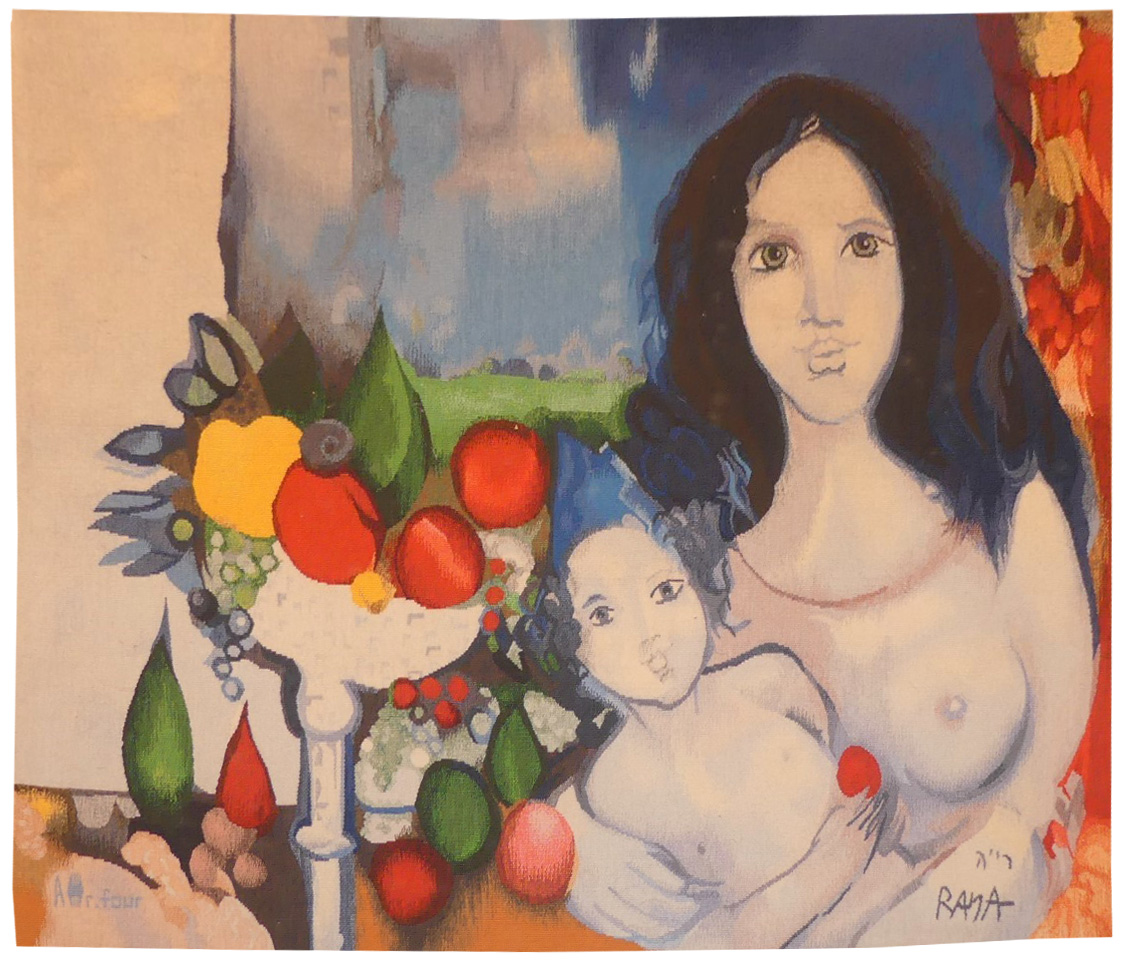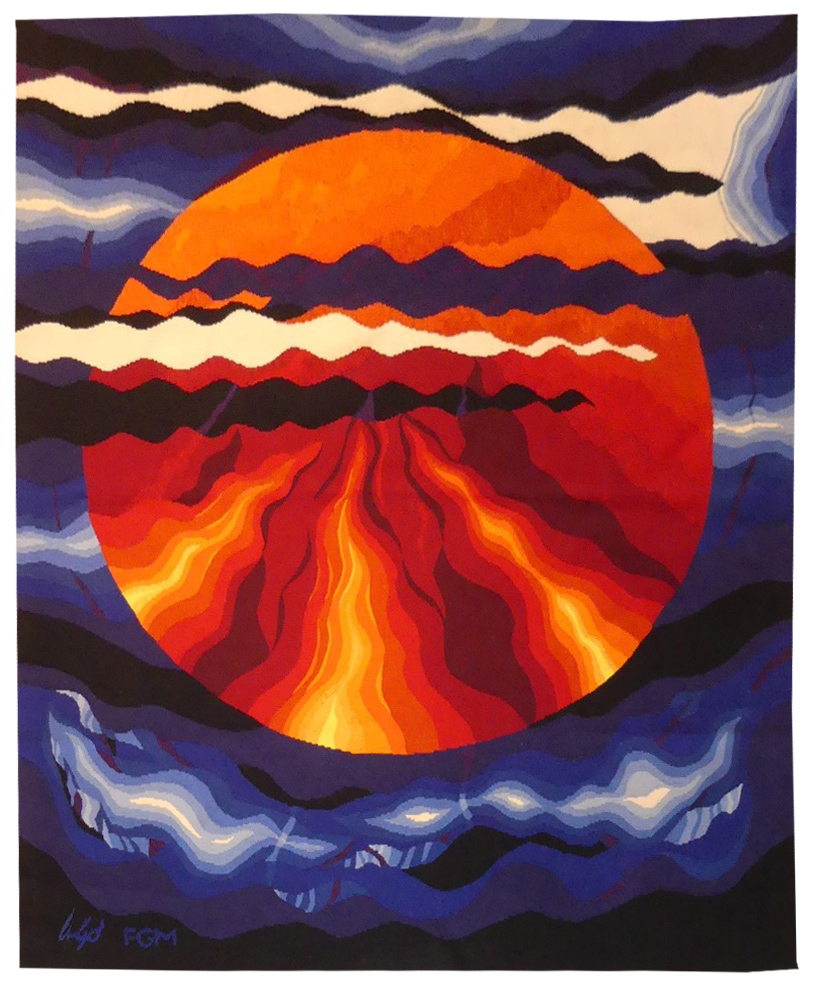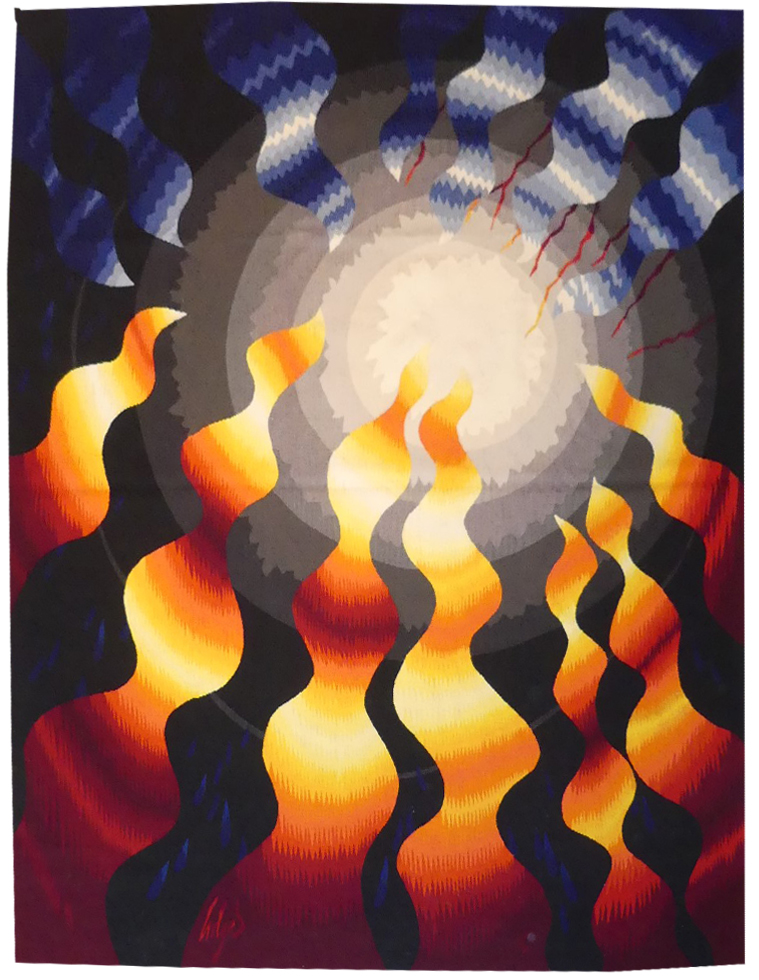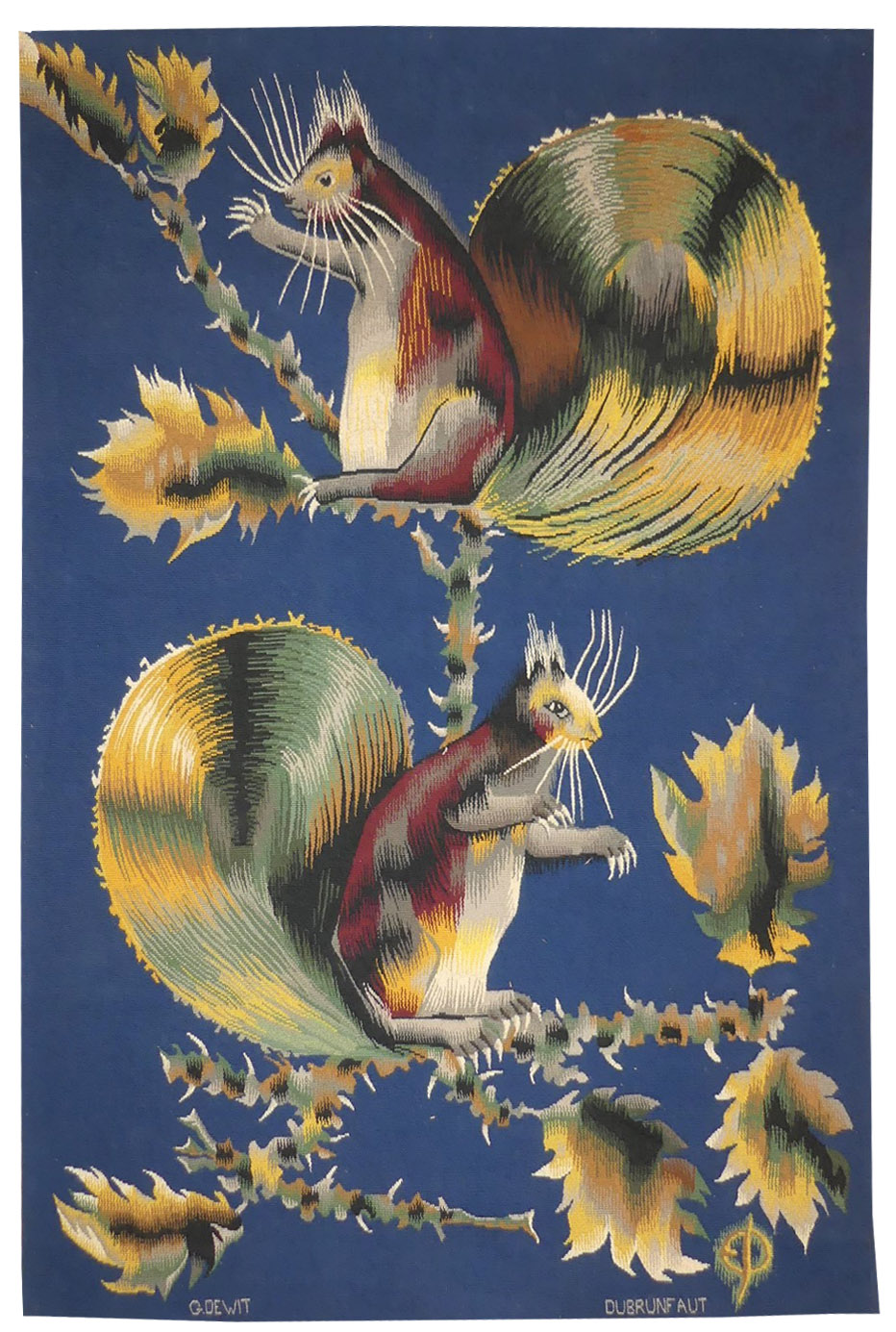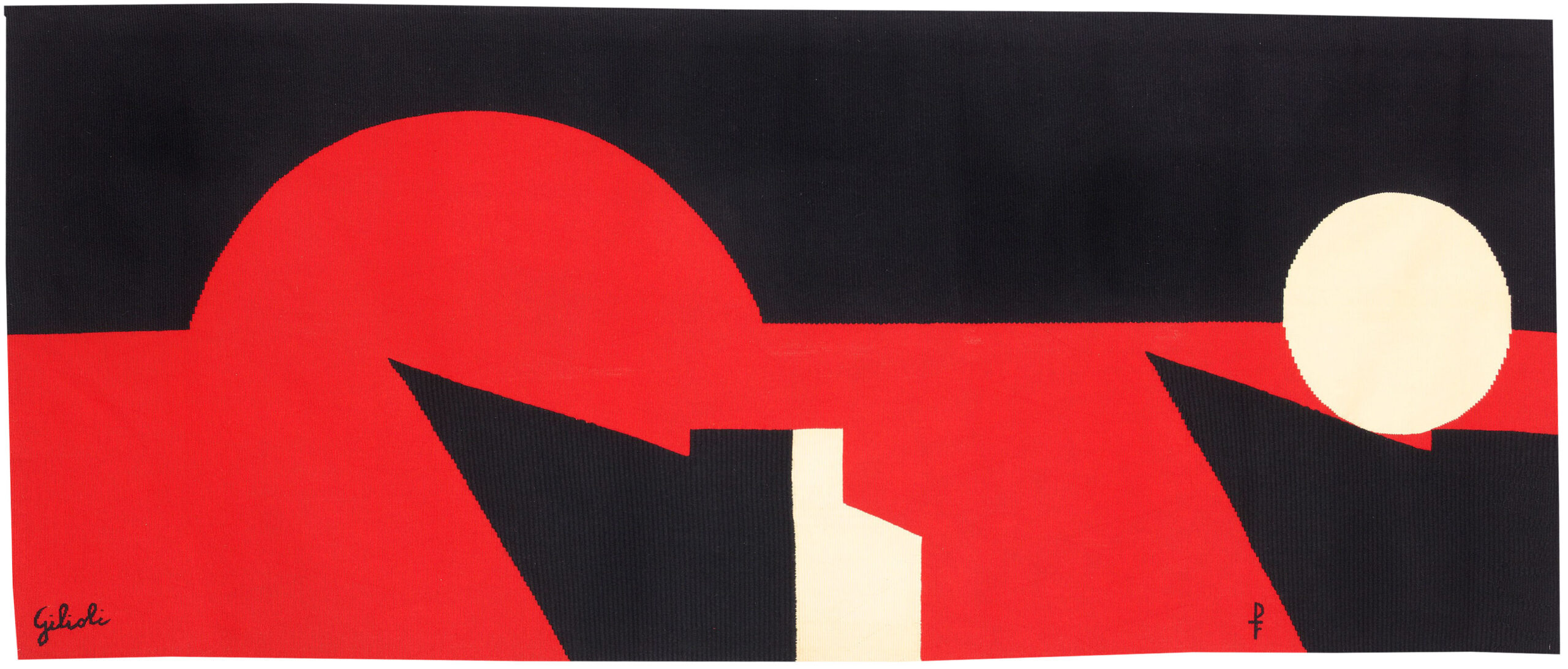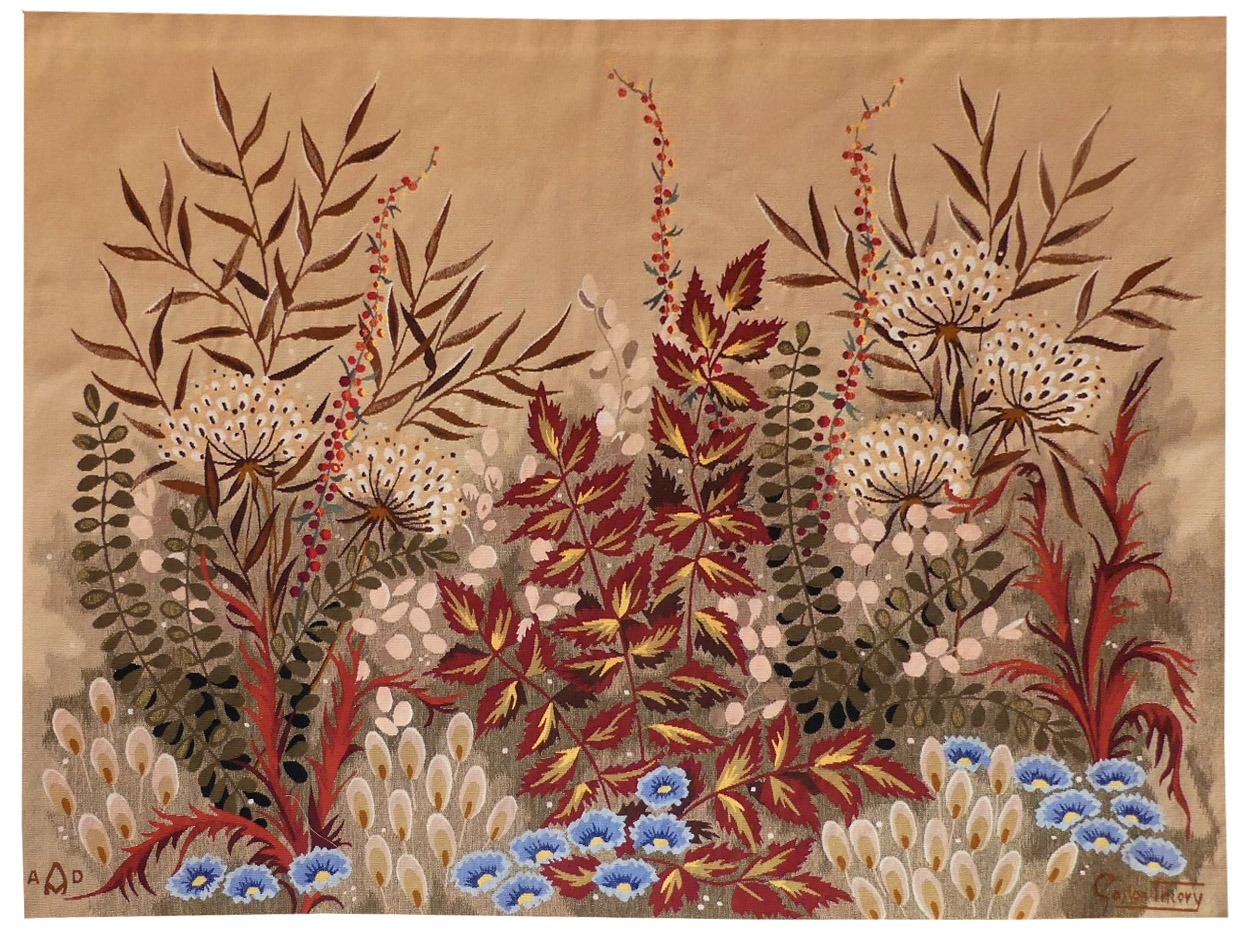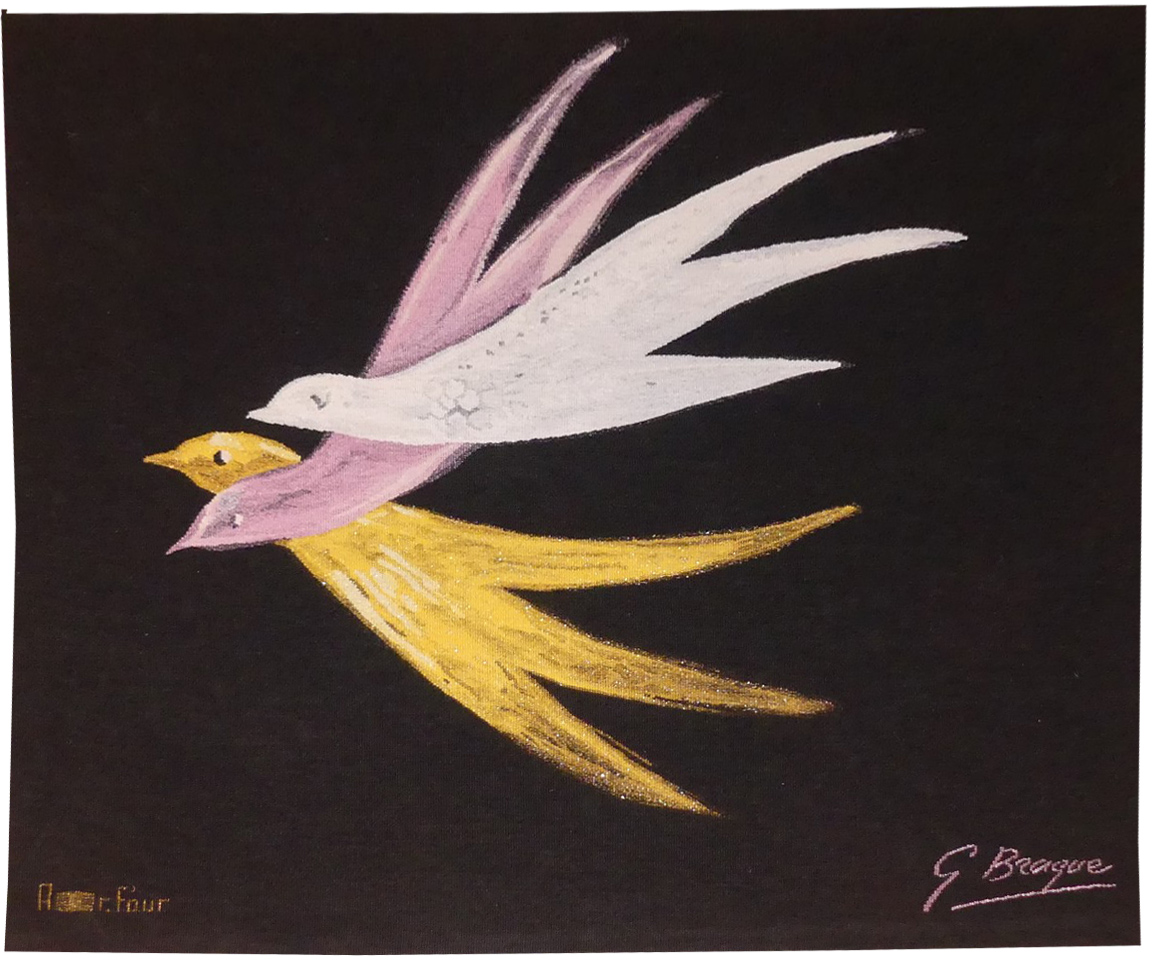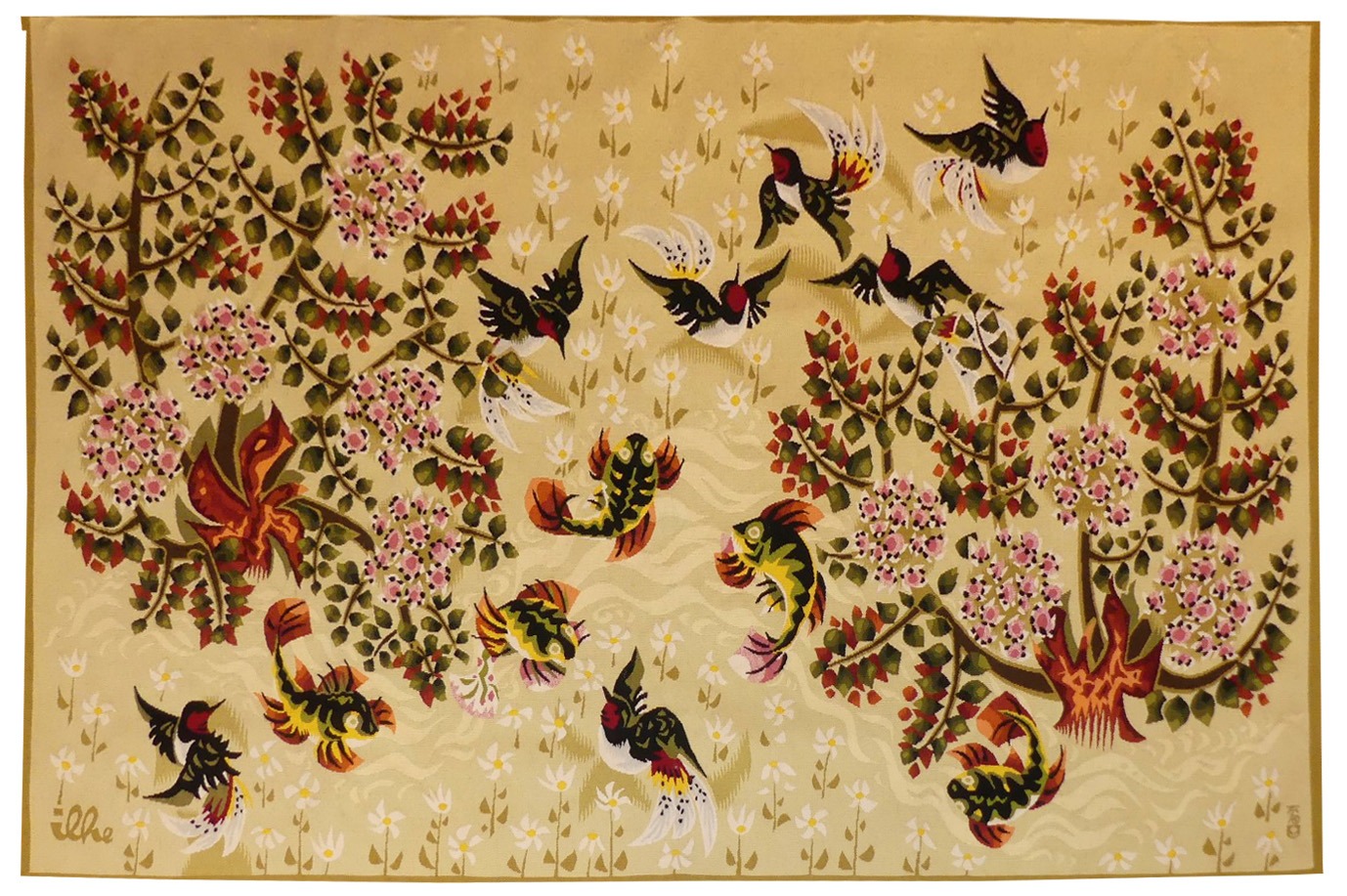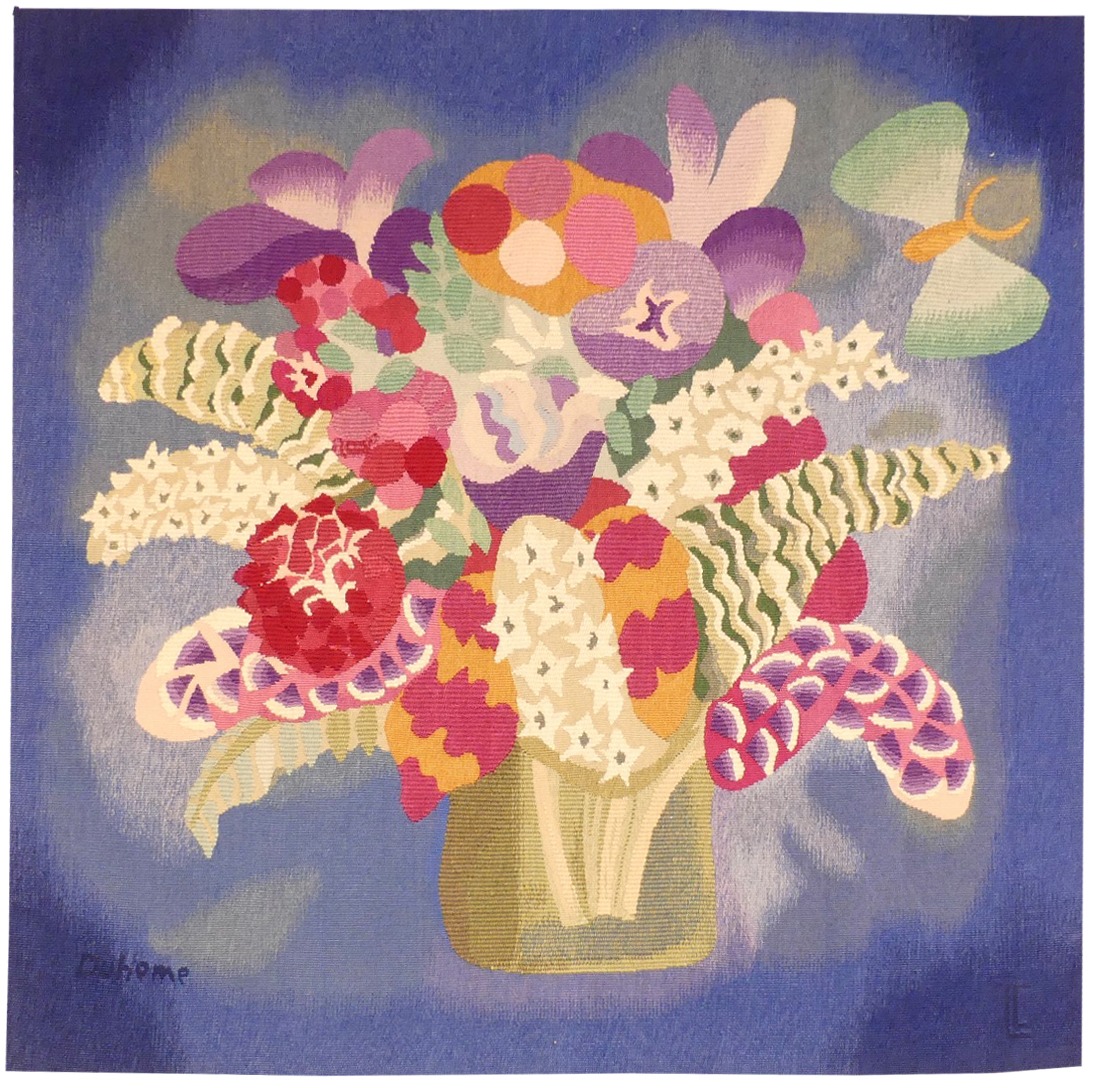-
Aubusson tapestry woven in the Legoueix workshop. With signed label, n°1/6. 1996.
-
Mond und Wasser (Moon and Water)
Tapestry woven by the Münchener Gobelin Manufaktur. Circa 1970.Holger was a student at the Ecole Nationale d’Art Décoratif d’Aubusson and worked with Lurçat before the latter’s death in 1966. He designed numerous dream-like cartoons woven by the Aubusson workshop. Now settled in the United States, he remains a tireless advocate for, and witness to, modern tapestry design, organising exhibitions and lectures on the subject. Some of his cartoons have been woven in the two workshops active in Germany, in Nuremberg and Munich, using Aubusson techniques. -
Feuer und Wasser (Fire and Water)
Tapestry woven by the Münchener Gobelin Manufaktur. With signed label. Circa 1970. Holger was a student at the Ecole Nationale d’Art Décoratif d’Aubusson and worked with Lurçat before the latter’s death in 1966. He designed numerous dream-like cartoons woven by the Aubusson workshop. Now settled in the United States, he remains a tireless advocate for, and witness to, modern tapestry design, organising exhibitions and lectures on the subject. Some of his cartoons have been woven in the two workshops active in Germany, in Nuremberg and Munich, using Aubusson techniques. -
Les 2 écureuils (the 2 squirrels)
Edmond Dubrunfaut can be considered as the great 20th century renovator of the Belgian tapestry tradition. He founded a weavers’ workshop in Tournai as early as 1942, then, in 1947, created the Centre de Rénovation de la Tapisserie de Tournai. He produced for various Belgian workshops (Chaudoir, de Wit,...) numerous cartoons destined notably to adorn Belgian embassies throughout the world. Moreover, Dubrunfaut was a teacher of monumental art forms at the Academie des Beaux-Arts de Mons from 1947 to 1978 and then, in 1979, contributed to the creation of the Fondation de la tapisserie, des arts du tissu et des arts muraux de Tournai, a veritable heritage centre for the art of the tapestry in Wallonie. His style, characterised by figuration, strong colour contrasts, draws direct inspiration from nature and animal life (as with Perrot, for example, this artist has a net predilection for birdlife). The squirrel is one of the artist's recurring themes (cf. ‘Evening Fires’, ‘Squirrels and Birds’...): here he uses the tails as a decorative motif in their own right.Tapestry woven by the de Wit workshop. With signed label. Circa 1960. -
Le périscope (the periscope)
Aubusson tapestry woven in the Pinton workshop. With signed label, n°1/6. 1971. -
Clos d'octobre (october enclosure)
Aubusson tapestry woven in the Andraud workshop. With label, n°EA2. 1978. -
Les 3 Grâces (the 3 Graces)
Braque is another 20th century artist who produced, however modestly, works in tapestry form. It was originally at the request of Marie Cuttoli in 1933, that he submitted works for reproduction as tapestries (Nature morte au guéridon [Still life on an occasional table], conserved at the Musée des Beaux Arts in Grenoble). In the 1950’s and 60’s it was Pierre Baudouin, in association with the weavers of Aubusson and the Nationale Manufactures, who would be asked to transcribe to cartoon format some of the artist’s productions. At the same time, shortly before his death in 1963, Braque made a last series of images in gouache, taking as their theme metamorphoses, which were destined for reproduction in various different media. Tapestry would be one of these. “The three graces”, 1962, is one which would appear in sculpture, or as jewelry. In it we observe the lyrical and synthetic style to be found in the artist’s last works (obviously the decor of the ceiling in the Henri II room at the Louvre, les Oiseaux [the birds] 1953 comes to mind).Aubusson tapestry woven by the Four workshop. N°3/6. Woven circa 2000, after a 1962 gouache. -
Laissez les vivre (let them live)
Aubusson tapestry woven in the Tabard workshop. With signed label, n°6/8. Circa 1970.Henri Ilhe, who came to the design of tapestry cartoons late on in his career, still managed to produce from 1964 onwards a considerable number (more than 120, all woven by the Tabard workshop) in an urbane style, incorporating birds and butterflies sporting in and around the gnarled branches of trees and bushes. “Laissez les livre” is thus, characteristic of Ilhe’s bucolic inspiration. -
Bouquet papillon (bunch butterfly)
Aubusson tapestry woven in the Legoueix workshop. With signed label, n°4/6. Circa 1980.From illustration to tapestry, there's only one (big) step to take - remember that Dom Robert was an illuminator! It was he, and Madeleine David, one of the co-directors of the La Demeure gallery, with whom she was close, that encouraged Jacqueline Duhême to take up the medium: preceded by her reputation as an “imagière” (cf. bibliography), illustrating Prévert, Eluard and Druon, she devoted herself to tapestry from 1967 (when she took classes with Tourlière at the ENAD in Aubusson, and became an enthusiast of numbered cartoons) to 1981, with La Demeure even devoting a solo exhibition to her in 1976. Her world, inspired by medieval mille-fleurs tapestries, is also reminiscent of dom Robert, but a dom Robert on amphetamines, where Nature is abundant, exotic and exuberant (cf. ‘Safari’, ‘l'oiseau de Paradis’). On a smaller, more polished scale, our cartoon bears witness to the colourful vitality of Duhême's inspiration. Bibliography : Cat. Expo. Jacqueline Duhême l’imagière, bibliothèque Forney, 2019


